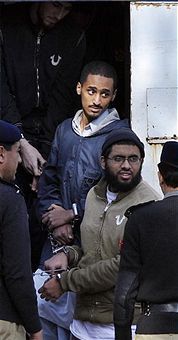 It’s not quite the “we got him” moment, as when US soldiers unearthed the fugitive Iraqi dictator. But the capture of Mullah Abdul Ghani Baradar, a top militant commander who is said to be second in command to elusive Afghan Taliban chief Mullah Mohhamad Omar, may be even more significant. By the time Saddam Hussein had been caught, the US was fighting a different enemy, though the Pentagon leadership had not realised yet. Baradar, who was in charge of the insurgency’s day-to-day operations on behalf of the so-called Quetta Shura, the Taliban’s leadership council, is very much today’s enemy – and his seizure should not be underestimated.
It’s not quite the “we got him” moment, as when US soldiers unearthed the fugitive Iraqi dictator. But the capture of Mullah Abdul Ghani Baradar, a top militant commander who is said to be second in command to elusive Afghan Taliban chief Mullah Mohhamad Omar, may be even more significant. By the time Saddam Hussein had been caught, the US was fighting a different enemy, though the Pentagon leadership had not realised yet. Baradar, who was in charge of the insurgency’s day-to-day operations on behalf of the so-called Quetta Shura, the Taliban’s leadership council, is very much today’s enemy – and his seizure should not be underestimated.
Doubts remain as to whether he was taken in Karachi, as the New York Times reported, or as part of the weekend’s fighting in Helmand Province. If he was seized inside Pakistan, his capture is all the more significant, as it suggests a new willingness on the part of the Pakistani authorities – and their double-dealing intelligence agencies – to go after the Taliban. The last couple of months have seen the US hug Pakistan particularly close, with senior administration officials travelling to Islamabad almost weekly. The operation may have been an early success of this “body-hugging” strategy.
The capture will also be important to show that the international community is turning the tide against the Taliban and steadying Pakistan’s hand. Even analysts close to the administration, like Brian Katulis from the Centre for American Progress, have been sounding downbeat about the US Pakistan strategy. Commenting on the Obama administration’s policy, he noted “curiously, the Pakistan sections offer little insight.”
But before the rush of success goes to anyone’s head it is worth remembering that insurgencies do not exist only to serve their masters. Many Taliban insurgents are committed to their movement. They will not all lay down arms if their leadership is removed or enough money is offered them. Decapitation and reintegration of foot-soldiers will not bring the counter-insurgency to an end. To quote Michael Semple, the EU official kicked out of Kabul for exploring talks with the Taliban: “a much more political approach that engages the Taliban leadership and convinces them that there is a viable alternative to their military campaign is needed.” That may come in the form of ministerial, local or judicial posts or as a democratic opposition with seats in parliament. This is reconciliation, not reintegration.
However, the Taliban will only come to the table if they believe they have no other choice. Until now, they have believed they were wining and that the US had begun its exit. ‘Decapitating’ key leaders like Mullah Baradar will help persuade the part of the Taliban leadership, which is more pragmatic than suggested in the hardline official position, that talks may be needed.
In peace studies, disarmament, demobilization and reintegration – or DDR – has long been the accepted way to deal with armed groups. But the Obama administration may finally be developing a successful variant of this strategy – decapitation, reintegration and reconciliation or DRR.






Comments